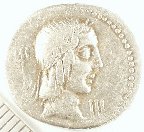
|
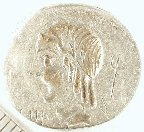
|
| Archive available at http://www.ChicagoCoinClub.org/ | |
|---|---|
| Volume 54 No. 2 | Febuary 2008 |
The 1069th meeting of the Chicago Coin Club was held in their new meeting room at the Chicago Bar Association, 321 S. Plymouth Court. The meeting was called to order at 7 PM by President Robert Feiler with 17 members and 1 guest, Richard Lipman.
The December Minutes printed in the Chatter were approved as published. Treasurer Steve Zitowsky presented a printed report showing December receipts of $2,808.00, expenses $2,709.26, December income -$98.74, and total assets $11,826.96. The report was approved as presented. Steve also presented the 2007 Treasurer’s Report showing 2007 receipts $6,070.29, 2007 expenses $6,256.34, 2007 income -$186.05, and total assets $11,826.96. Following several questions for clarification the report was approved as written.
The life membership committee reported member John Whitfield (1136) of Anderson, SC filed an application to become a life member. They reported their unanimous approval and the club passed a motion to accept his application. The application for membership of Leonard Augsburger (no. 1148) received second reading and a motion was passed to accept him into the Club. The application of Richard Lipman received first reading. Correspondence was read from the Central States Numismatic Society related to their upcoming convention (April 16-19) in Rosemont, Illinois. A card was read from Rosalind Ryant expressing holiday greetings and thanking the Club for the writing the “excellent” obituary on Charles that appeared in the numismatic press.
With a slight delay in setting up the projection equipment official business was conducted. Winston Zack was presented with an engraved Honorable Mention medal for his 2007 meeting exhibits. Jennie Sochon was given a round of applause in gratitude for overseeing the creation of a custom corrugated carrying case for the Club’s newly acquired document reader. Mark Wieclaw commented on how he admired the many members who volunteer their services and contribute to the general operation of the Club.
Before introducing the evening’s featured program, the upcoming program schedule was announced: for February - Steve Zitowsky on Papal Coinage; and March – Sharon Blocker on Coins and Currency of 20th Century Cuba. Mark Wieclaw was introduced and delivered the evening’s featured presentation on Roman Minting Errors. Following a question-and-answer period, First V.P. Jeff Rosinia presented Mark with an ANA Educational Certificate.
Second V.P. Lyle Daly introduced the evening’s 11 exhibitors. ROBERT WEINSTEIN: 5 ancient error coins; DONALD DOOL: 9 bronze early-dated error coins; ROBERT LEONARD: Ecuadorian axe money; DAVID GUMM: U.S. 1823/1822 large cent; STEVEN ZITOWSKY: a Salzburg silver ¼ taler, 1642 Klippe and HRE silver pfennig from Vienna; SHARON BLOCKER: 2 Austrian 20 Euros showing railroads and a $5 red seal U.S. banknote; WINSTON ZACK: an ancient Roman silver denarius and 4 U.S. coins; ROBERT FEILER: 4 coins made into rings or in process; ANDREW MICHYETA: a 1907 Panama medio centesimo; MARC STACKLER: Mexican paper currency; and MARK WIECLAW: 6 wooden medals from 1876 Centennial Expo, Columbian Expo box medal, ancient Roman coins and promotional numismatic items including imprinted shot glasses, hat, Masonic money clip and an ashtray.
The meeting was adjourned at 9:15 PM.
Sincerely Submitted,
Carl Wolf, Secretary
presented to our January 9, 2008 meeting
by Mark Wieclaw
The most commonly encountered type of error found on Roman coins is the brockage. It is produced when a struck coin sticks to a die, so that the next planchette will be struck by one die and a coin produced by that die. One side of a brockage has the intended design while the other side, struck by the coin stuck to the die, has an incuse and backwards version of the design found on the coin that stuck to the die. Consider the first brockage that Mark showed us, a denarius from 67 BC with the head of Apollo and a trident behind the head:

|

|
The obverse die was usually the base (lower) die, and the planchet was placed on the lower die; the reverse die was struck by a hammer while the reverse die was hand held on top of the planchet. The typical case was to have the coin stick to the hand-held die, explaining why most brockages are obverse brockages. Fewer Roman Empire brockages are known than from the Republican era — no one knows why. But more were created during the later years of the Empire than during the early years.
Mark showed many brockages from many centuries including a coin with serated edges from 106 BC as a brockage, and a coin with jugate heads having four heads as a brockage. Mark looks for well centered examples for his collection, and suggested collecting the twelve caesars as brockages; he has seen a Gelba brockage, but there are one or two emperors he has not seen.
Brockages can be found well worn, indicating that they circulated along with the correctly struck coins. Brockages can be found at most coin shows with ancient coins; they might be priced at twice the price as a regular coin. Here is a nice Gordian III antoninianus as a brockage.
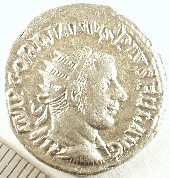
|
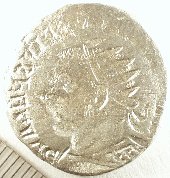
|
A few reverse brockages are known with a few shown; Mark ventured that they were produced by placing a blank planchet atop a struck coin that had stuck to the lower die. An alternate explanation would be that the reverse die was the base die, but that is a break from convention instead of just a chance error.
Brockages are not the only errors at the mint. There are off-center strikes, resulting from a planchet not located exactly between the dies. There are double strikes, but those are obvious only if a die position has changed between the strikes. A less common double strike is a flip over, when the coin has flipped over between strikes. Some double strikes can be confusing at first glance: the legends are odd if the coin rotated 180 degrees between strikes, as shown on a follis of Maxentus; a double struck Byzantine follis of Justinian II appears to have jugate heads.
Sometimes the mint did try to rework an error, as shown by a Roman Republic brockage that was then retsruck with a pegasus reverse die. Even though they worked by hand, experienced mint workers could produce coins at a rapid rate with scarcely a glance given to each struck coin. There have always been errors, and always will be errors. Mark concluded by showing a Lincoln Cent struck on a Roosevelt dime.
| Amos Advantage | Chicago Coin Company |
| Numismatic News | Harlan J. Berk, Ltd. |
Items shown at our January 9, 2008 meeting.
Each image has a scale in the lower-left corner, with the tics spaced 1 mm apart. Because the brightness and contrast were manipulated on a computer, the coloring of a coin’s image differs from the coin’s actual coloring.
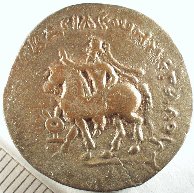
|
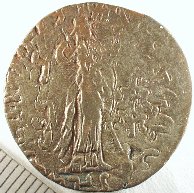
|
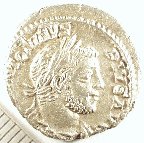
|
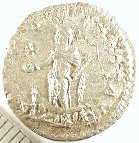
|
The Central States Numismatic Society (CSNS) will hold their 69th annual convention April 16-19, 2008 at the Donald Stephens Convention Center, Rosemont. Chicago Coin Club members are encouraged to participate by building an educational exhibit or two. There are eight categories and every first, second and third place winner will receive a gold coin. Exhibit applications received before March 1 will be placed in a drawing for a ¼-ounce U.S. gold eagle! The absolute deadline for submitting an application is March 15th. You must be a member of CSNS ($10/year). Membership forms, exhibit applications, exhibit rules and regulations can be found at www.centralstates.info. Forms will also be available at the February meeting.
If you need help and advice on exhibiting, then speak to experienced exhibitors who attend most Club meetings, including Don Dool, Jeff Rosinia, Mark Wieclaw, Carl Wolf and more.
Carl Wolf, Secretary
| Date: | February 13, 2008 |
| Time: | 7:00 PM |
| Location: | Downtown Chicago
At the Chicago Bar Association, 321 S. Plymouth Court, 3rd floor meeting room. Please remember the security measures at our meeting building: everyone must show their photo-ID and register at the guard’s desk. To the immediate south of the CBA building is the Plymouth Restaurant with standard sandwiches, burgers and salads for members who want to meet for dinner. |
| Featured speaker: | Steve Zitowsky - A Millennium of Coins from the Papal States |
|
In a survey of coins from the Papal States over the last thousand years, Steve will show how the coins describe the Western world of that age in the areas of economy, industrialization. and art. |
| February | 13 | CCC Meeting - Featured Speaker - Steve Zitowsky on A Millennium of Coins from the Papal States |
| March | 12 | CCC Meeting - Featured Speaker - Sharon Blocker on Coins & Currency of 20th Century Cuba |
| March | 28-30 | 14th Annual Chicago Paper Money Expo (CPMX) at the Crown Plaza Chicago O’Hare, 5440 North River Road, Rosemont, IL. Admission is $5 for Friday and Saturday; free on Sunday. |
| March | 29 | CCC Meeting - 1pm at the Chicago Paper Money Expo,
which is held at the Crown Plaza Chicago O’Hare, 5440 North River Road, Rosemont, IL.
No admission charge for our meeting.
Featured Speaker - Steve Feller on Silent Witness: Civilian Camp Money of World War II |
| April | 9 | CCC Meeting - Featured Speaker - to be announced |
| April | 17-19 | 69th Anniversary Central States Numismatic Society (CSNS) at the Donald E. Stephens Convention Center, 5555 North River Road, Rosemont, IL. |
| April | 25-27 | 33rd Annual Chicago International Coin Fair (CICF) at the Crown Plaza Chicago O’Hare, 5440 North River Road, Rosemont, IL. Admission is $5 for Friday and Saturday; free on Sunday. |
| April | 26 | CCC Meeting - 1pm at the Chicago International Coin Fair (CICF),
which is held at the Crown Plaza Chicago O’Hare, 5440 North River Road, Rosemont, IL.
No admission charge for our meeting.
Featured Speaker - to be announced |
| March | 7 | Bruno Rzepka | 1968 |
| March | 16 | Michael Brodsky | 1991 |
| March | 16 | Jared Irish | 2007 |
| March | 19 | Charles Ricard | 1963 |
| March | 20 | Robert Wallace | 2007 |
| March | 20 | Casimer Fadze | 2007 |
| March | 29 | Nancy Wilson | 1984 |
| March | 31 | Andrew E. Michyeta III | 1984 |
All correspondence pertaining to Club matters
should be addressed to the Secretary and mailed to:
CHICAGO COIN CLUB
P.O. Box 2301
CHICAGO, IL 60690
http://www.ChicagoCoinClub.org/
| Robert Feiler | - President |
| Jeff Rosinia | - First Vice President |
| Lyle Daly | - Second Vice President |
| William Burd | - Archivist |
| Directors: | Eugene Freeman
Elliot Krieter Carl Wolf Mark Wieclaw |
| Other positions held are: | |
| Carl Wolf | - Secretary |
| Steve Zitowsky | - Treasurer |
| Paul Hybert | - Chatter Editor |
chatter_editor@yahoo.com
The print version of the Chatter is simply a printout of the Chatter web page,
with a little cutting and pasting to fill out each print page.
The web page is available before the Chatter is mailed.
If you would like to receive an email link to the latest issue instead of a mailed print copy
send an email to chatter_editor@yahoo.com.
You can resume receiving a mailed print copy at any time, just by sending another email.